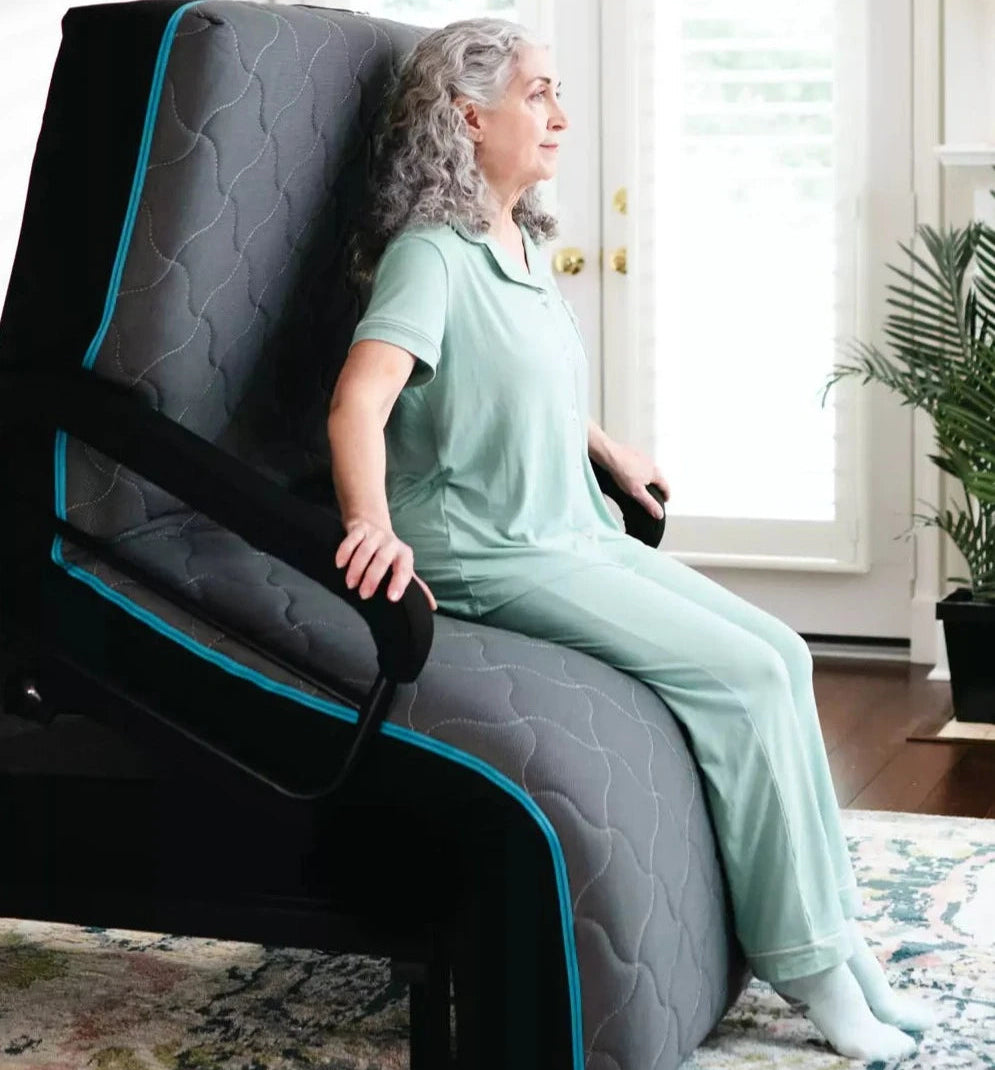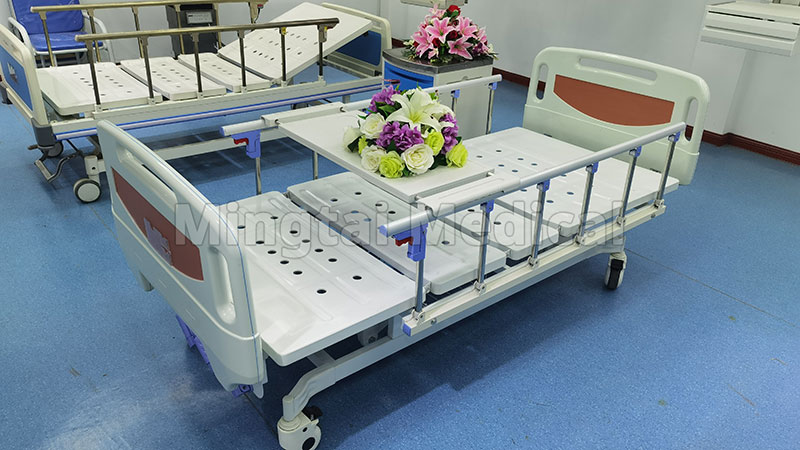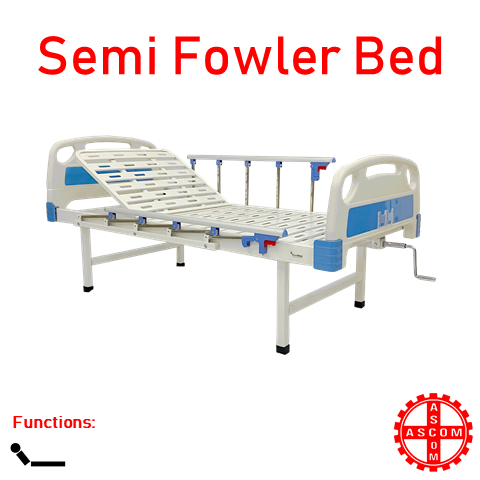Hospital Beds For Home Use for Beginners
Hospital Beds For Home Use for Beginners
Blog Article
The Best Guide To Hospital Beds For Home Use
Table of ContentsThe Best Strategy To Use For Hospital Beds For Home UseWhat Does Hospital Beds For Home Use Do?What Does Hospital Beds For Home Use Do?A Biased View of Hospital Beds For Home UseFascination About Hospital Beds For Home Use4 Simple Techniques For Hospital Beds For Home UseRumored Buzz on Hospital Beds For Home Use
There are three primary kinds of healthcare facility beds: guidebook, semi-electric, and fully-electric. These beds utilize hand cranks to change the bed's height and elevate and lower the head and the foot.
Semi-electric beds have an electric motor to raise and reduce the head and foot sections of the bed (hospital beds for home use). Full-electric beds have an electric motor that can elevate the head and foot areas of the bed as well as the whole height and positioning of the bed.
Hospital Beds For Home Use Fundamentals Explained
There are numerous types of hospital beds, each designed to satisfy details individual requirements. Below are some common kinds: This is the most typical type of healthcare facility bed, developed for general clinical usage.
Lower to the ground than a conventional bed. This sort of bed is made for larger clients, with a wider frame and greater weight capacity than a conventional bed. This sort of bed is designed specifically for kids, with smaller sized dimensions than a common bed. Special functions such as complete length side rails and animation design.
This kind of bed is created for seriously unwell people who require open monitoring and specialized medical devices such as ventilators and mixture pumps. This kind of bed is developed for use throughout labor and shipment, with adjustable positions and functions to sustain the mom and child during the birth procedure.
Some Known Incorrect Statements About Hospital Beds For Home Use
Numerous feature and the accessories carry out broadening grip to different components of the vertebra and the extremities without relocating the body. These are simply a couple of instances of the kinds of health center beds readily available. The specific kind of bed made use of will certainly depend on the patient's problem, medical requirements, and other variables.
Here is the thing you need to understand. A one-function health center bed is a medical bed that allows a patient to relocate only the head or foot area up or down. A 2 function healthcare facility bed normally refers to a kind of clinical bed that has 2 adjustable features to assist patients in health centers or care facilities.

The Main Principles Of Hospital Beds For Home Use
A 7-function ICU bed is a sort of clinical bed that offers a number of flexible functions to sustain seriously sick clients in an intensive treatment system (ICU) (hospital beds for home use). The 7 functions normally include: Back-rest change: The backrest can be readjusted to various angles to help the individual stay up or relax comfortably
Height modification: The bed can be raised or reduced to make it less complicated for people to enter and out of bed, and for caregivers great post to read to provide care. Trendelenburg setting: The whole bed can be tilted to promote blood circulation and circulation in the body. Reverse Trendelenburg placement: The bed can likewise be slanted in the contrary direction to promote blood circulation and blood circulation in the upper body.
While even more cost effective than electrical designs, these beds need physical initiative for changes. The main advantages of hands-on beds are their cost and reliability, as they do not count on power. Nonetheless, the need for hand-operated effort can be a limitation in circumstances where fast adjustments are essential or where caretakers deal with physical obstacles.
The 5-Minute Rule for Hospital Beds For Home Use
Semi-electric healthcare facility beds provide an equilibrium of handbook and electric controls. These beds offer a suitable middle ground between handbook and fully electric options, using convenience of use without the full cost of electrical models.
Semi-electric beds are appropriate for clients that require modest modifications to the head and foot sections however can manage without regular height changes. This makes them an affordable service for those looking for convenience and comfort without the need for constant repositioning. Completely electrical medical facility beds include electric controls for smooth adjustments to the height, head, and foot sections.
Specialized medical facility beds, such as ICU beds, lasting treatment beds, and bariatric beds, are meticulously created to deal with specific medical needs. These beds supply tailored treatment for varied individual groups, improving both outcomes and convenience. In the adhering to areas, we will discover the primary sorts of specialized health center beds, detailing their particular advantages and applications.
With years of experience in producing electric straight actuators - hospital beds for home use and close collaboration with the medical care market, TiMOTION is well-positioned to offer reputable health care solutions. Our vertically integrated company handles every action of the manufacturing process, from style to actuator assembly, ensuring we supply exceptional value and personalized solutions customized to your specific requirements
Unknown Facts About Hospital Beds For Home Use

To get more information regarding incorporating these technologies right into your products, call us today. Additional analysis:.
Information is sourced from the Medicare Expense Report.

The Only Guide to Hospital Beds For Home Use
A medical facility bed is a bed designed particularly for medical purposes. It is not just a place for patients to relax, yet likewise a platform for clinical procedures. Unlike regular home beds, healthcare facility beds generally have adjustable functions, which can assist in clinical personnel to make different adjustments according to the needs of patients, such as changing the elevation, disposition, and support angle of the back and legs of the bed.
Report this page